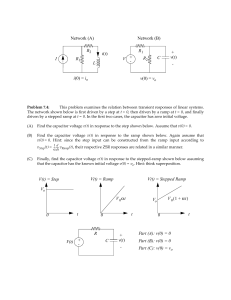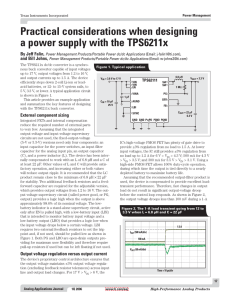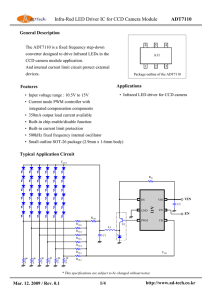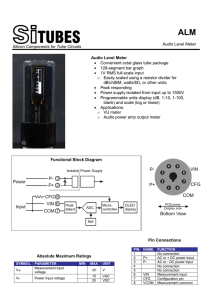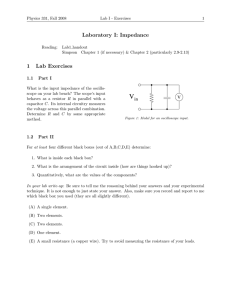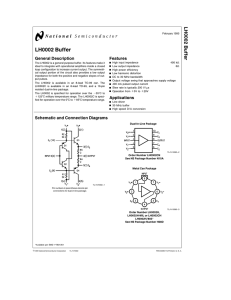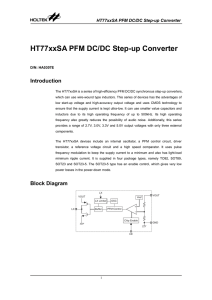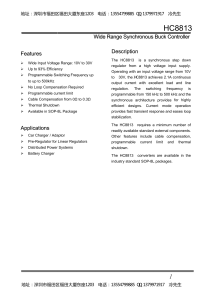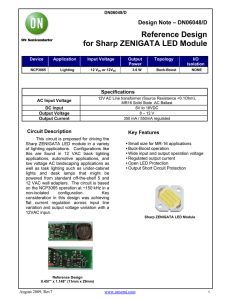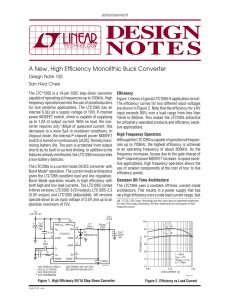L <
advertisement
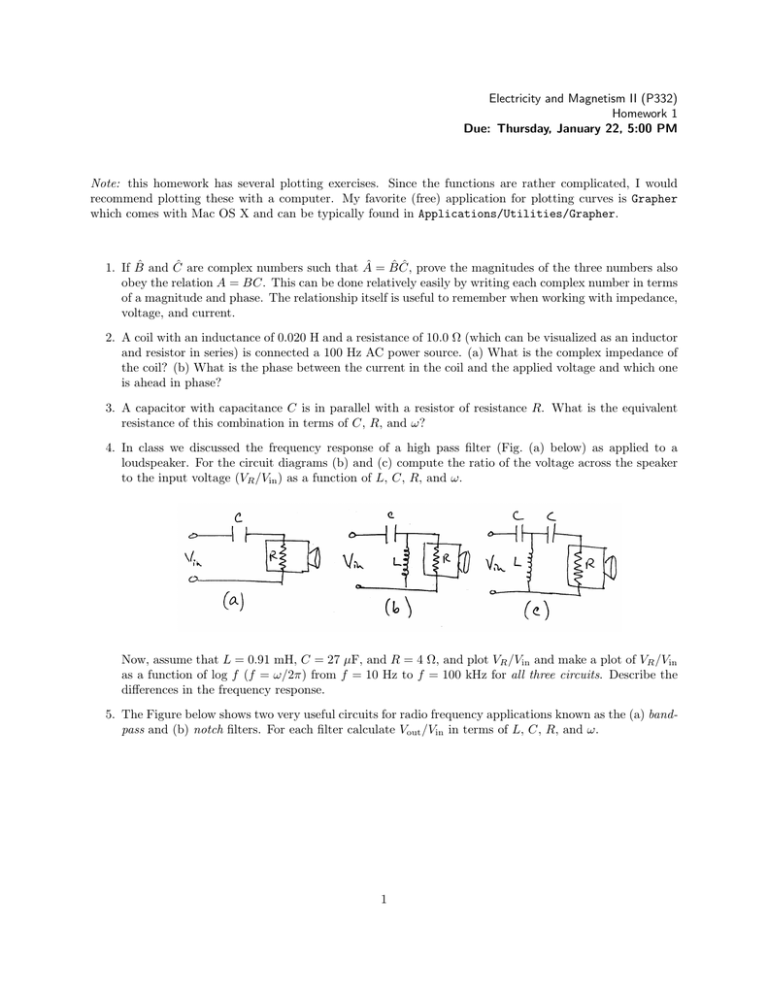
Electricity and Magnetism II (P332) Homework 1 Due: Thursday, January 22, 5:00 PM Note: this homework has several plotting exercises. Since the functions are rather complicated, I would recommend plotting these with a computer. My favorite (free) application for plotting curves is Grapher which comes with Mac OS X and can be typically found in Applications/Utilities/Grapher. 1. If B̂ and Ĉ are complex numbers such that  = B̂ Ĉ, prove the magnitudes of the three numbers also obey the relation A = BC. This can be done relatively easily by writing each complex number in terms of a magnitude and phase. The relationship itself is useful to remember when working with impedance, voltage, and current. 2. A coil with an inductance of 0.020 H and a resistance of 10.0 Ω (which can be visualized as an inductor and resistor in series) is connected a 100 Hz AC power source. (a) What is the complex impedance of the coil? (b) What is the phase between the current in the coil and the applied voltage and which one is ahead in phase? 3. A capacitor with capacitance C is in parallel with a resistor of resistance R. What is the equivalent resistance of this combination in terms of C, R, and ω? 4. In class we discussed the frequency response of a high pass filter (Fig. (a) below) as applied to a loudspeaker. For the circuit diagrams (b) and (c) compute the ratio of the voltage across the speaker to the input voltage (VR /Vin ) as a function of L, C, R, and ω. L a-1 < Now, assume that L = 0.91 mH, C = 27 µF, and R = 4 Ω, and plot VR /Vin and make a plot of VR /Vin as a function of log f (f = ω/2π) from f = 10 Hz to f = 100 kHz for all three circuits. Describe the differences in the frequency response. 5. The Figure below shows two very useful circuits for radio frequency applications known as the (a) bandpass and (b) notch filters. For each filter calculate Vout /Vin in terms of L, C, R, and ω. T 1 V,tr^_ V'e T L f Vl,- I J, Ca) 1 t V o-+ L T 1 V,tr^_ V'e T L f Vl,- I J, t V o-+ L Ca) Compute the frequency at which the output of the bandpass filter is maximum and the frequency at which the output of the notch filter is a minimum. This tells you something about how an inductor and capacitor in parallel and series respond: LC in parallel has a frequency at which the impedance is infinite, while LC in series has a frequency at which the impedance is zero. Assume that L = 0.36 mH, C = 100 µF, and R = 100 Ω. Plot Vout /Vin as a function of log f (f = ω/2π) around the “interesting” frequency calculated above. This should make it clear why they are called bandpass and notch filters. Qualitatively describe what happens to the response as you change R. 6. A circuit is made by putting a resistor, capacitor, and inductor in series. (Assume the values of the components are the same for those in Problem 5 above.) If the circuit is driven with an AC power supply at a frequency that is twice the resonant frequency, what is the phase between the driving voltage and the current in the circuit? Does the current lead or lag behind the voltage? 2


